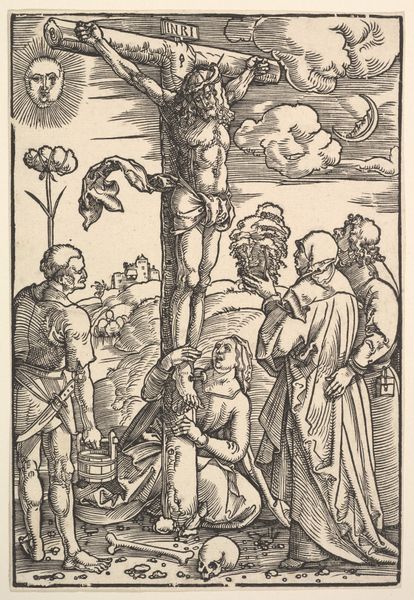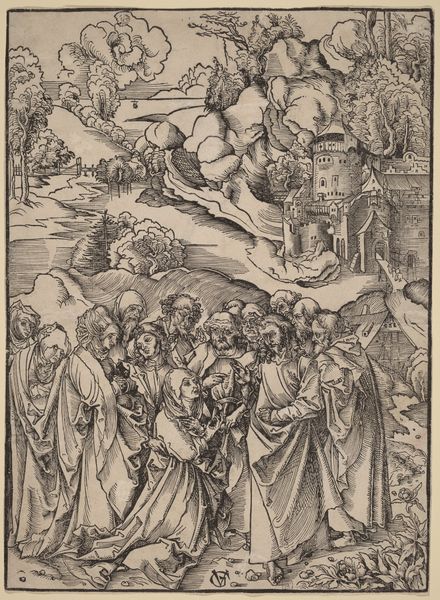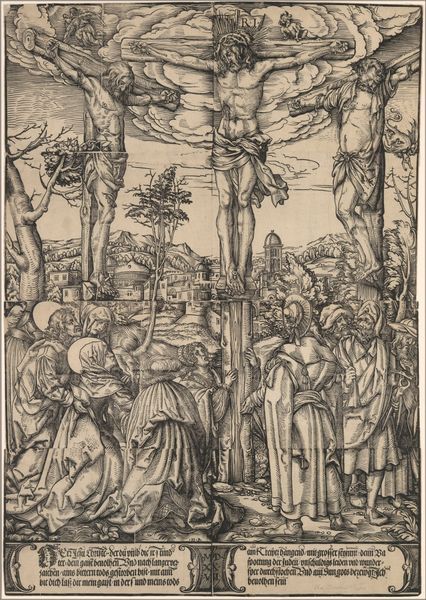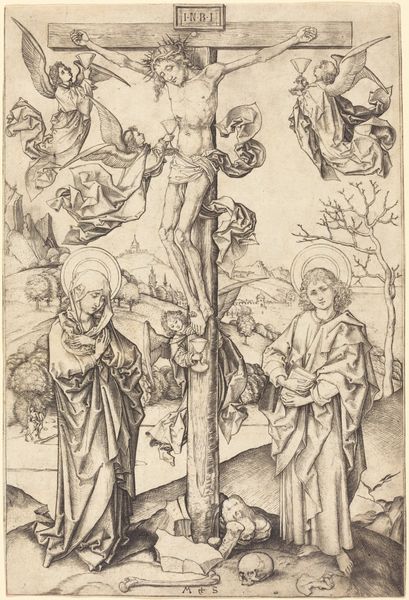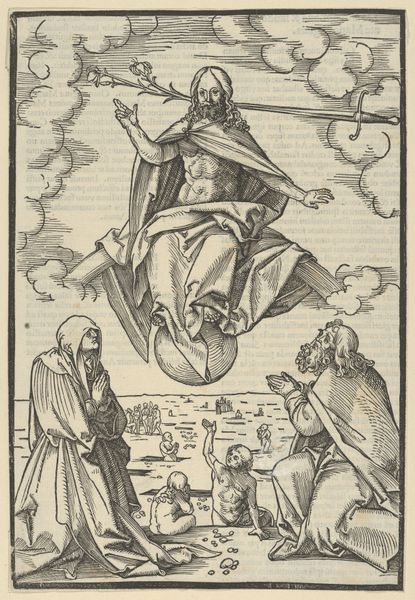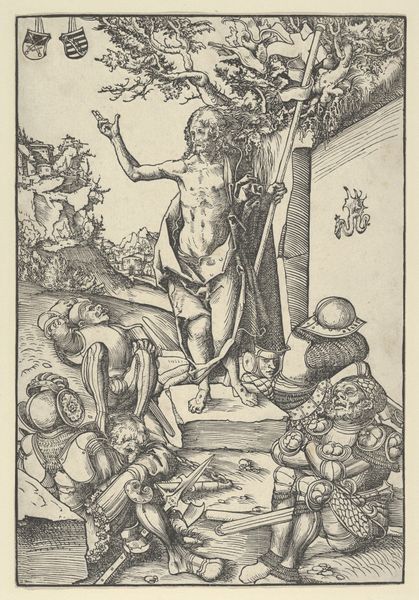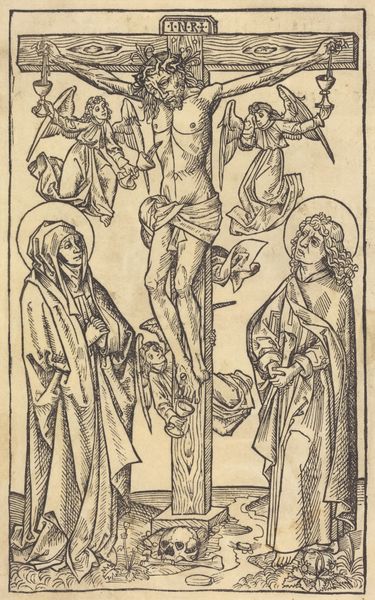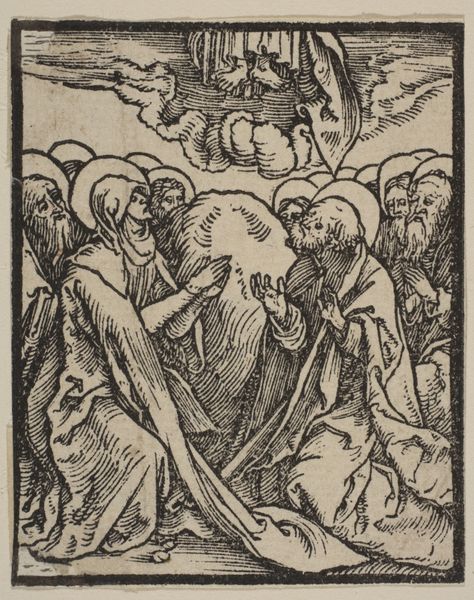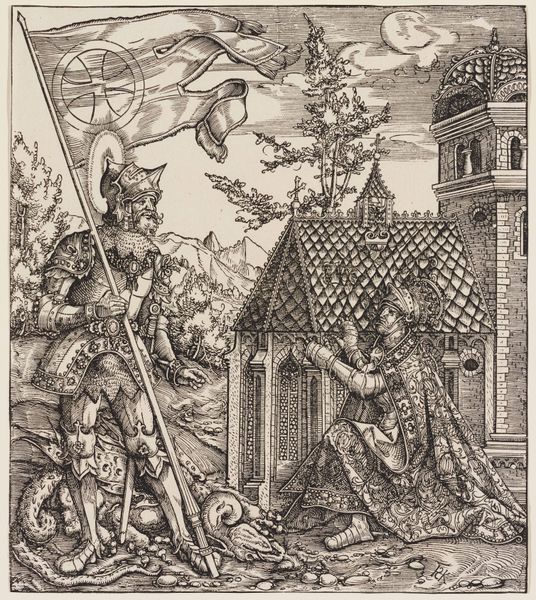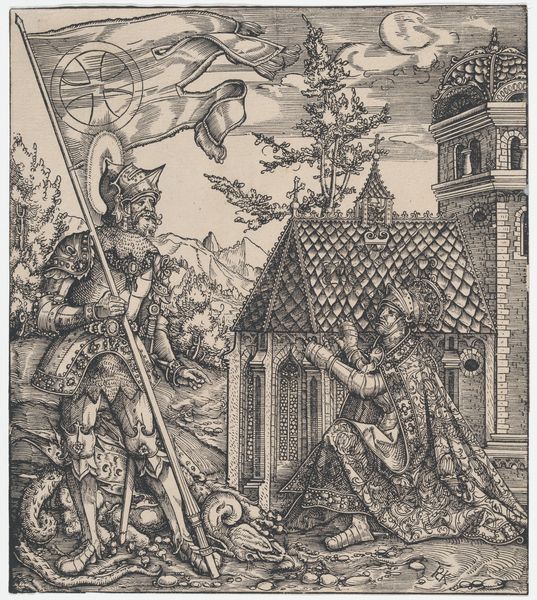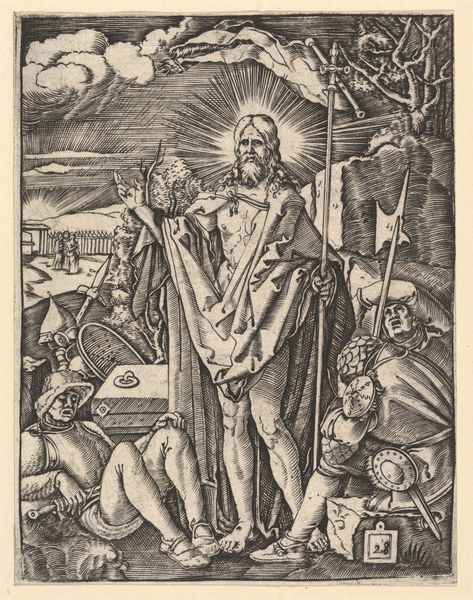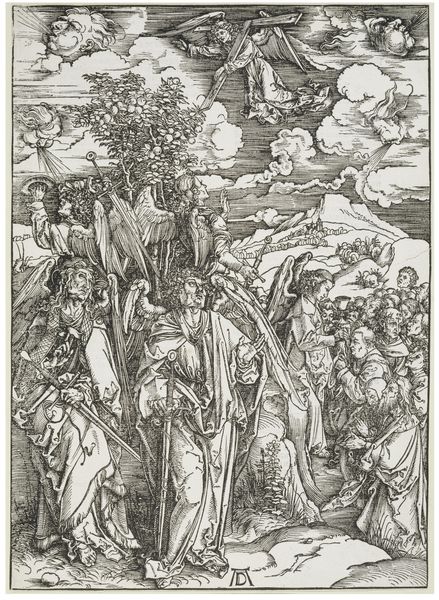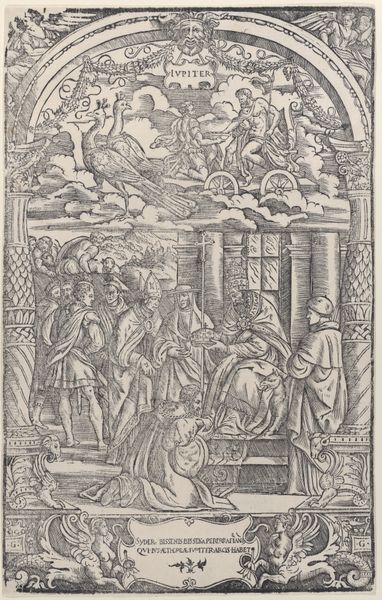
print, engraving
#
ink drawing
#
medieval
# print
#
figuration
#
line
#
history-painting
#
engraving
Dimensions: 10 11/16 x 7 3/16 in. (27.15 x 18.26 cm) (image)
Copyright: Public Domain
Editor: This print, titled "Christ on the Cross with Two Saints", dates back to the 15th century and is attributed to an anonymous artist. The medium appears to be engraving, creating these incredibly detailed lines. What strikes me is how this historical piece uses such intricate detail to portray such a stark and painful moment. How can we even begin to interpret its artistic activism? Curator: Let's think about this piece within the context of its time, during a period of intense religious fervor and social stratification. This wasn’t simply a depiction of the crucifixion. Instead, consider how the artist may have been subtly critiquing societal power structures. Notice how the skull at the bottom could act as a memento mori, reminding both the powerful and powerless of the inevitability of death, suggesting a leveling effect despite societal inequities. What emotions does the presentation of the angels, in contrast with Mary and John, evoke in you? Editor: That contrast is fascinating! It makes me think about societal expectations, gender, and race. The Virgin Mary's sorrow is quite pronounced while St. John has a supplicant energy; the Angels don't acknowledge the mortal plane. Do you see that criticism reflected in the landscape? Curator: Absolutely. Even the distant landscape with its idealized towns can be interpreted through a lens of power dynamics – the artist perhaps juxtaposing earthly ideals with spiritual suffering. Considering these various factors allows us to examine not just what's represented, but *how* and *why*, revealing complex social commentaries embedded in religious iconography. This piece isn’t just passively religious, is it? Editor: I see it now! By embedding symbols of mortality and earthly power within such a familiar scene, the artist subtly critiques the social hierarchy, which creates an activist dimension in the work. Curator: Exactly. And understanding this artwork through these intersecting layers of history and theory can empower us to read even more contemporary works with greater nuance. Editor: It definitely adds a whole new dimension to how I understand art’s potential for activism. Curator: As it should. It shows the potent ways art can foster cultural shifts and question prevailing norms, beyond surface-level narratives.
Comments
No comments
Be the first to comment and join the conversation on the ultimate creative platform.
